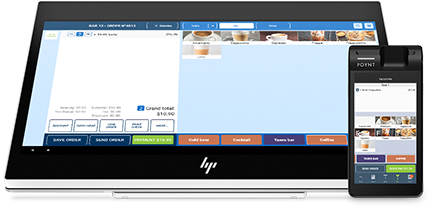Friday Blackout? Don’t See Red. Get iPad Point-of-Sale Systems3 min read
 The day after Thanksgiving is the busiest shopping day of the year for consumers and one of the most important for retailers. For U.S. consumers, Black Friday marks the official kick-off of the Christmas shopping season; for retailers, it signifies the first day of the holiday selling season in the fourth quarter of the fiscal year – that period when retailers, who have operated “in the red” (i.e., at a loss) throughout the year, begin to operate “in the black” (i.e., at a profit) (a relatively recent positive interpretation of the name, “Black Friday,” around which retailers have rallied). Sales on that one day are an enormously important indicator of sales for the entire season.
The day after Thanksgiving is the busiest shopping day of the year for consumers and one of the most important for retailers. For U.S. consumers, Black Friday marks the official kick-off of the Christmas shopping season; for retailers, it signifies the first day of the holiday selling season in the fourth quarter of the fiscal year – that period when retailers, who have operated “in the red” (i.e., at a loss) throughout the year, begin to operate “in the black” (i.e., at a profit) (a relatively recent positive interpretation of the name, “Black Friday,” around which retailers have rallied). Sales on that one day are an enormously important indicator of sales for the entire season.
Summing up last year’s holiday retail season, Heather Dougherty at Hitwise Intelligence – the leading source of online competitive intelligence – reported that “For the 2nd consecutive year, Black Friday was the highest day for retail traffic during the holiday season, followed by Thanksgiving and Cyber Monday.” Because of the significant role it plays in a retailer’s total holiday sales, the loss in sales engendered by a crash in a retailer’s internal point-of-sale (POS) system and/or inventory system on Black Friday could be disastrous. While Black Friday is a U.S. phenomenon, retailers around the globe (many of whom have operations in the U.S.) are turning to new, cloud-based iPad point-of-sale systems to ensure they don’t see red during the holiday selling season.
As a rule, retailers are critically dependent on holiday sales. Technology journalist Alex Handy, Senior Editor for BZ Media’s flagship publication, Software Development Times (aka, SD Times), says “Many retailers rely on Christmas time to make or break their entire year.” That dependency effects even the largest retailers. In its annual report (Form 10K) to the Securities and Exchange Commission (SEC) for the fiscal year ending February 2, 2008, global giant, Toys “R” Us, Inc., disclosed that not only were more than 40% of its worldwide sales and the majority of its earnings and cash flow generated in the fourth quarter, the vast majority of its fourth quarter sales were achieved during the all-critical holiday selling season.
Moreover, the company said, its sales, earnings or cash flows during the holiday selling season needed to be high enough to sufficiently make up for the losses it incurred the rest of the year (see Risk Factors (Part I, Item 1A) on p. 13 of Toys “R” Us’ annual report). Handy says that, while scaling their existing POS system to meet increased holiday demand would help retailers prevent system failure, doing so is impractical at best, since outdated, bulky, traditional retail POS systems are difficult and expensive to scale and both real-estate and people intensive. As he explains, “[T]hese systems scale in the more traditional way: more boxes, more servers, more cashiers.” But, new, cloud-based iPad point-of-sale systems change the rules of the game and remove the dilemma altogether.
iPad point-of-sale systems not only give retailers both the ability and agility to quickly and easily scale to meet Black Friday sales demands, these affordable, fast, easy, portable, intuitive POS systems let retailers take back both the valuable real estate previously consumed by space-hungry traditional POS systems and the sales staff required to man them – enabling retailers to put those bonus space and manpower gains to work to help ensure a profitable holiday selling season in the fourth quarter and increase sales year-round.
Disclaimer: This is an independent report sourced from one or more news articles and or press releases; none of the company’s, entities or technologies digressed in this report are affiliated with or a client of Aptito.
Aptito offers a unique All-in-One Solution that features iPad point-of-sale systems which also includes a reservation app, integrated POS with remote access and an easy-to-use online interface. Click Here to learn more.



